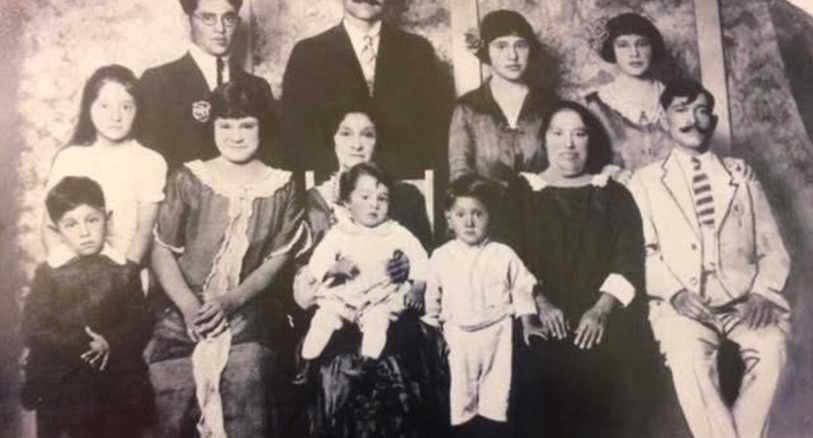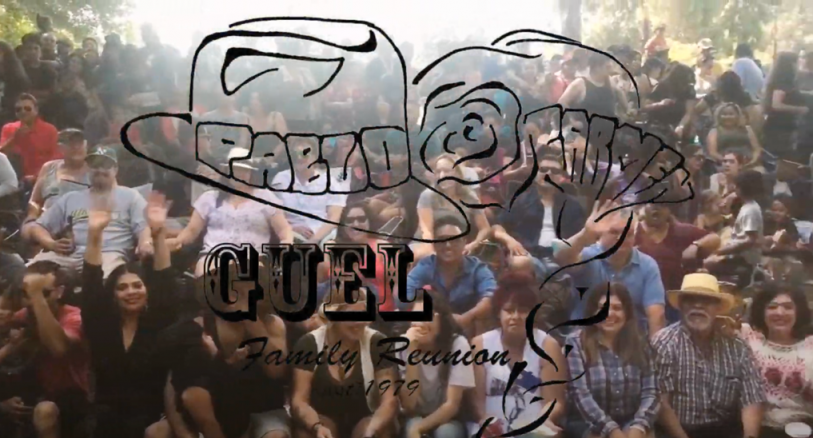I have heard the story about how our bisabuelos were married many times, but never was it more real than in the moment I learned my Tia Elvia found this document: their real marriage certificate from 1925, stating they were both from Bayard, Nebraska.
The story goes that Great Grandma Carmen was married to Great Grandpa Pablo at a very young age. She was born in 1910, making her only 15 years old. So why does this marriage certificate say that she was 18, not 15?
 I went back through our family history archives to verify… You can tell in the pictures from that time period that she was very young. She was pregnant already in the family photos with my Tía Ana who was born in July 1926. I immediately called each of the folks on our Family History Committee to interview them this morning to confirm the details (Elvia, Joe, Juan) because I just had to know: What were they doing in Wyoming in 1925 and why does it say they’re from Nebraska?
I went back through our family history archives to verify… You can tell in the pictures from that time period that she was very young. She was pregnant already in the family photos with my Tía Ana who was born in July 1926. I immediately called each of the folks on our Family History Committee to interview them this morning to confirm the details (Elvia, Joe, Juan) because I just had to know: What were they doing in Wyoming in 1925 and why does it say they’re from Nebraska?
This post is a compilation of facts, carried on through generations of storytelling, that has been seemingly consistent in all of the explanations I have gathered.
Why was Pablo said to be from Nebraska at that time?
Great Grandpa Pablo traveled up to live in Nebraska because during the Mexican Revolution of 1910, the family migrated to the United States from San Luis Potosi, Mexico. Pablo’s oldest brother was forced involuntarily to fight for the Pancho Villa side (the revolutionary army), but he went AWOL (absent without official leave), picked up his mom Simona and his sisters and Grandpa Pablo, and they headed to the frontera.
They crossed the border, migrated into the United States through Texas, and hung around the border towns for some time trying to find Pablo’s father who had been abducted and taken in to fight for the Federales (for the government’s side) during the Revolution. However, in the border towns, there was much poverty and limited jobs.
At that time, it was common for farmers from the northern United States to go to the border towns to recruit farmworkers, offering people housing, food, and money. They recruited large families to go from the frontera all the way to Nebraska where sugar beet was a popular crop. From there, the family migrated to Bayard, Nebraska.
It is told that if you overlay the rail system on the route of the family’s migration, you can see that they were jumping on the rails; the route takes you from Mexico straight through Colorado and Nebraska and that was the main source of transportation.
Why was Carmen said to be from Nebraska at that time?
Her parents died prematurely so she and her sister Jesusita (Tía Chuy) were in an orphanage in Cosala, México near Mazatlán. The story goes that there was a “Tía Cuca” who was already in the United States, running a housing project for farmworkers in Nebraska. She traveled down to Cosala where the orphanage was and she picked up the girls.
Tía Cuca didn’t have a very good reputation historically. She had a hotel with a bunch of rooms so she put Carmen and her sister to work, painting, and fixing things. After a short period of time, she arranged a marriage for Carmen’s older sister to a decades-older man who owned the nearby pool hall. This was the Prohibition Era and he also was known to own several other questionable businesses.
At that time, girls’ rights were very limited, and poor girls had even fewer options for their futures. So it was no surprise when Carmen learned that Tía Cuca was also becoming quite explicit about her plans to marry her off to a much older man soon too.
Carmen once visited a nearby park and saw a good looking man who was playing baseball. He went to get some water from the faucet and they started talking when she learned he was 8 years older. Regardless, the two made a real connection and she knew from the start that she would much rather elope with a kind-hearted Pablo Guel than to be married off to an old man.
How did they get this marriage certificate?
They traveled to Wyoming to elope discreetly without the watchful eye of her Tía. If you look at a map, you’ll see it’s not that far from their hometown. The certificate states that she was 18 years old because their elopement would have required the 15-year-old Carmen to gain consent from a parental guardian and they both knew that Tía Cuca would never have agreed to let them marry because she had plans of her own for the young girl.
The story goes that, in those days, Pablo was up to a lot of shenanigans of his own. He was a bit of a hustler, a leader, a labor organizer, driving people to the farm sites like a foreman. But he was also doing some bootlegging, helping workers with a lot of forgeries and other documents. He had ready access through his networks to people who could help make these certificates legal quickly.
Pablo and Carmen’s children still, to this day, recall our family history of following the crops because that’s where the work was, but the bootlegging was added to help the growing family get through The Great Depression era in the United States. Because he was a foreman, he had year-round work rather than seasonal work and they were doing pretty well. Pictures of the young couple from this time in their lives show they dressed to the nines because he did a mixture of things to make money. In that whole landscape, he ended up on top.
There are a lot of family members who would be offended by his activities, but there is political, social, and economic context for why they were necessary for their growing family during that era.
What happened next?
They continued to live in Bayard, Nebraska for a period of time, but they would move from one area to the next because of the harvesting of the crops. Just a year after they were married in Goshen, Wyoming, their first baby girl Ana was born in 1926 followed by Juan in 1927, both in Nebraska. Luis was born shortly thereafter in Laramie, Wyoming in 1930.
They went back to Mexico in 1935 because, during The Great Depression, the government was offering a certain amount of money to go and they took the opportunity. This is why some of the elder generation were born as United States citizens and others were not. For more information and historical context, visit us online here.




1 Comment
Anita ochoa
Thank you for this history, Our parents would be proud love my familia